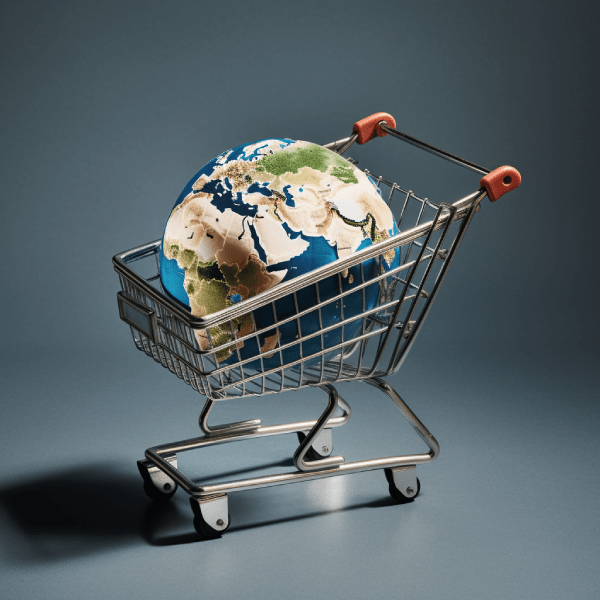Rethinking progress: moving beyond GDP
There is a need to move away from the traditional linear economic model that emphasizes GDP growth as the primary measure of progress. This model has been criticized for being too focused on economic growth at the expense of social and environmental well-being. To create a more sustainable and equitable economic system, there needs to be a shift towards a model that prioritizes economic, social, and environmental well-being, while recognizing the interconnectedness of these factors.
This shift towards a more holistic approach to measuring progress requires a reevaluation of our values and priorities as a society. Instead of solely focusing on maximizing profits and GDP growth, we need to consider the broader impacts of our economic activities on people, prosperity, and the planet. This means recognizing that economic growth cannot come at the cost of social inequality, environmental degradation, and the depletion of natural resources.
New metrics for measuring well-being in society
To achieve a more balanced and sustainable economic system, policymakers need to adopt new metrics that go beyond GDP and take into account a wider range of economic, social, and environmental factors. This includes measures of social welfare, such as access to education, healthcare, and affordable housing, as well as environmental indicators, such as carbon emissions and resource use.
In addition, there needs to be a greater focus on promoting sustainable practices and technologies that support economic growth while minimizing environmental impact. This includes investing in renewable energy, promoting sustainable agriculture, and developing more efficient transportation systems.
The need for a holistic approach to measuring progress
Ultimately, the shift towards a more holistic approach to measuring progress requires a change in mindset and a commitment to putting the well-being of people and the planet at the center of economic decision-making. By embracing a new economic model that prioritizes balance and sustainability, we can create a more equitable and prosperous world for all.
Global indicators of well-being: a comprehensive picture
There are several global indicators that are commonly used to measure wellbeing. Some of the most widely recognized indicators include:
- Human Development Index (HDI): This index is calculated by the United Nations Development Programme (UNDP) and takes into account a country’s life expectancy, education, and income per capita.
- World Happiness Report: This report ranks countries based on the happiness of their citizens, using data on factors such as income, social support, and freedom to make life choices.
- Genuine Progress Indicator (GPI): This index measures the economic welfare of a country, taking into account not only income but also factors such as social and environmental costs and benefits.
- Multidimensional Poverty Index (MPI): This index was developed by the UNDP and measures poverty based on multiple dimensions, such as health, education, and standard of living.
- Happy Planet Index (HPI): This index measures how efficiently countries are using their resources to provide long and happy lives for their citizens, taking into account factors such as life expectancy, wellbeing, and ecological footprint.
- Social Progress Index (SPI): This index measures the wellbeing of a country’s citizens based on factors such as basic human needs, access to healthcare and education, and personal rights and freedoms.
- Better Life Index (BLI): This index, developed by the Organisation for Economic Co-operation and Development (OECD), allows people to compare wellbeing across countries based on 11 different dimensions, including housing, income, and work-life balance.
Overall, these indicators provide a comprehensive picture of wellbeing, taking into account not only economic factors but also social and environmental factors that can impact people’s quality of life.
The Richard Barrett Global Wellbeing Indicator (GBWI): a new tool for measuring well-being
The Richard Barrett Global Wellbeing Indicator (GBWI) was developed by Richard Barrett, an author and consultant in the area of values-based leadership and cultural transformation. Barrett first began developing the concept of the GBWI in the early 2000s, as part of his work on creating a new model for organizational and societal transformation based on values and consciousness.
The GBWI is based on Barrett’s “Seven Levels of Consciousness” framework, which he developed as a way of understanding personal and societal development. Barrett’s work on the GBWI continued over the next decade, and in 2019 he published a book entitled “The Metrics of Human Consciousness,” which outlined the development and use of the GBWI.
In September 2020, Barrett asked Pamela Doherty, the CEO and Co-Founder of AxiaOrigin, to test the validity of the GBWI model and develop software to visualize the data. The resulting collaboration led to the creation of the GBWI website, which provides access to the data and insights generated by the tool.
Overall, the GBWI represents the culmination of years of research and development by Richard Barrett, aimed at creating a tool that can help organizations and communities measure and improve their overall well-being by taking into account a wide range of factors related to values and consciousness.
The seven levels of consciousness: a framework for measuring well-being across society
The GBWI is based on the concept of the “Seven Levels of Consciousness,” which represent different stages of personal and societal development. These levels are:
- Survival consciousness: Meeting basic survival needs such as food, shelter, and safety.
- Relationship consciousness: Building social connections and relationships.
- Self-esteem consciousness: Focusing on personal growth and achievement.
- Transformation consciousness: Seeking a higher purpose and making a positive impact on society.
- Internal cohesion consciousness: Building strong communities and institutions.
- Making a difference consciousness: Contributing to global issues and causes.
- Service consciousness: Living a life of service to others and the planet.
The GBWI measures wellbeing across these seven levels, taking into account factors such as social cohesion, environmental sustainability, education, health, and economic prosperity. The tool uses a combination of surveys and statistical analysis to provide a comprehensive picture of wellbeing, and is designed to help leaders and policymakers identify areas of strength and areas for improvement in their organizations or communities.
A comparison of well-being indices: the GBWI and other major indicators
Here is a brief comparison of the GBWI index with other major indices:
- The Human Development Index (HDI) measures a country’s development by looking at indicators such as life expectancy, education, and income. In contrast, the Richard Barrett Global Wellbeing Indicator (GBWI) takes a broader approach, looking at a society’s overall wellbeing across seven levels of consciousness, including social cohesion and environmental sustainability.
- The World Happiness Report focuses specifically on measuring the happiness of a country’s citizens. In contrast, the GBWI considers a wider range of factors, including economic, social, and environmental well-being.
- The Genuine Progress Indicator (GPI) is designed to measure economic welfare by taking into account social and environmental factors. Similarly, the GBWI recognizes the need for a more balanced approach to measuring progress, and includes factors such as social cohesion and environmental sustainability.
- The Happy Planet Index (HPI) measures how efficiently countries are using their resources to provide long and happy lives for their citizens. While the GBWI does not specifically measure resource efficiency, it does recognize the need for a more holistic approach to measuring progress that takes into account the well-being of people and the planet.
- The Social Progress Index (SPI) measures a society’s well-being based on factors such as basic human needs, access to healthcare and education, and personal rights and freedoms. The GBWI takes a similar approach, looking at a society’s overall well-being across multiple dimensions, including economic, social, and environmental factors.
- The Better Life Index (BLI) allows people to compare well-being across countries based on 11 different dimensions, including housing, income, and work-life balance. The GBWI takes a broader approach, looking at a society’s overall well-being across seven levels of consciousness, including factors such as social cohesion and environmental sustainability.
Overall, while there are similarities between these indicators, the Richard Barrett Global Wellbeing Indicator (GBWI) takes a more holistic approach to measuring progress, recognizing the interconnectedness of economic, social, and environmental factors in promoting overall well-being.
Taking a comprehensive approach to measuring well-being: a call to action.
Measuring well-being requires taking a comprehensive approach that considers economic, social, and environmental factors, as well as the subjective experiences of individuals. By using a combination of indicators and surveys, policymakers can gain a more complete picture of well-being and work towards creating policies that promote the well-being of people and society.
Interesting facts
- Since the 1950s, global GDP has grown by over 370%, while global population has grown by only 150%. (World Bank, 2021)
- Despite this growth, income inequality has increased, with the top 1% owning more wealth than the bottom 50% of the world’s population. (Credit Suisse, 2021)
- The traditional linear economic model has led to unsustainable practices such as overconsumption, environmental degradation, and resource depletion. (United Nations, 2019)
- The global economic cost of environmental damage caused by human activity is estimated at $4.7 trillion per year, equivalent to 6.2% of global GDP. (World Wildlife Fund, 2020)
- The traditional economic model does not account for the social costs of economic growth, such as income inequality, poverty, and poor health outcomes. (The Lancet, 2021)
- Studies have shown that beyond a certain point, increased GDP does not lead to improved well-being or happiness for individuals. (World Happiness Report, 2021)
- Alternative economic models, such as the circular economy, emphasize the importance of social and environmental well-being in addition to economic growth. (Ellen MacArthur Foundation, 2013)
- The circular economy model, which aims to minimize waste and promote sustainable resource use, has the potential to create up to 18 million jobs globally by 2030. (World Economic Forum, 2018)
- The COVID-19 pandemic has highlighted the need for economic systems that prioritize social and environmental well-being over GDP growth, with calls for a “green recovery” that invests in renewable energy and sustainable infrastructure. (United Nations, 2020)
- The United Nations Sustainable Development Goals (SDGs) provide a framework for transitioning towards a more sustainable economic model that balances economic, social, and environmental well-being. (United Nations, 2015)



